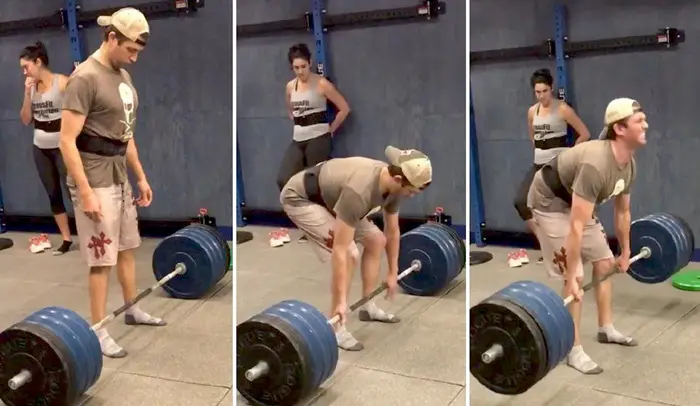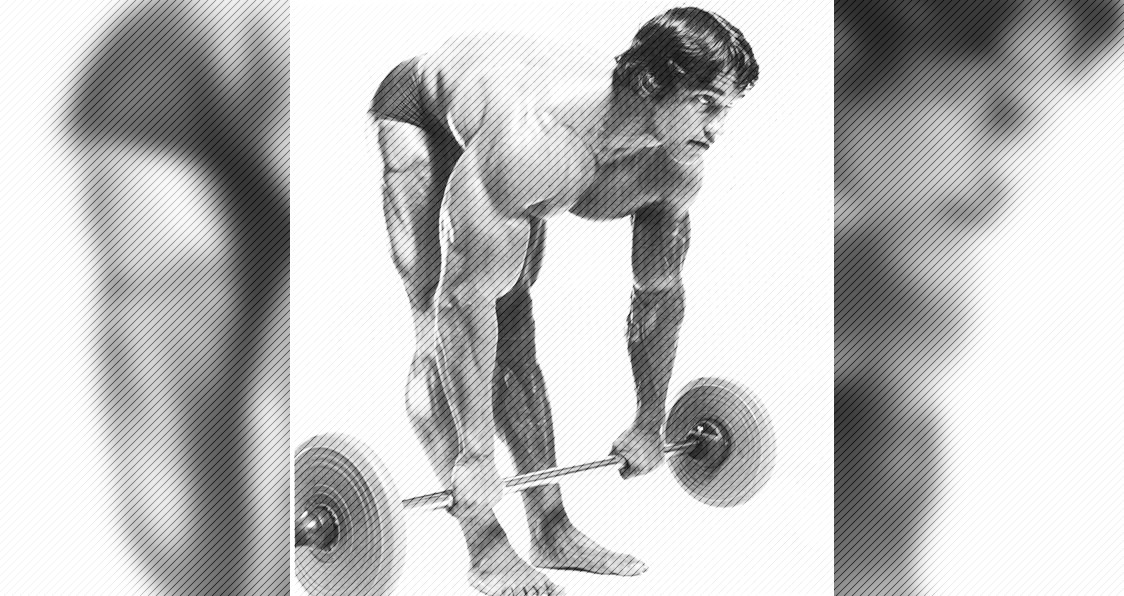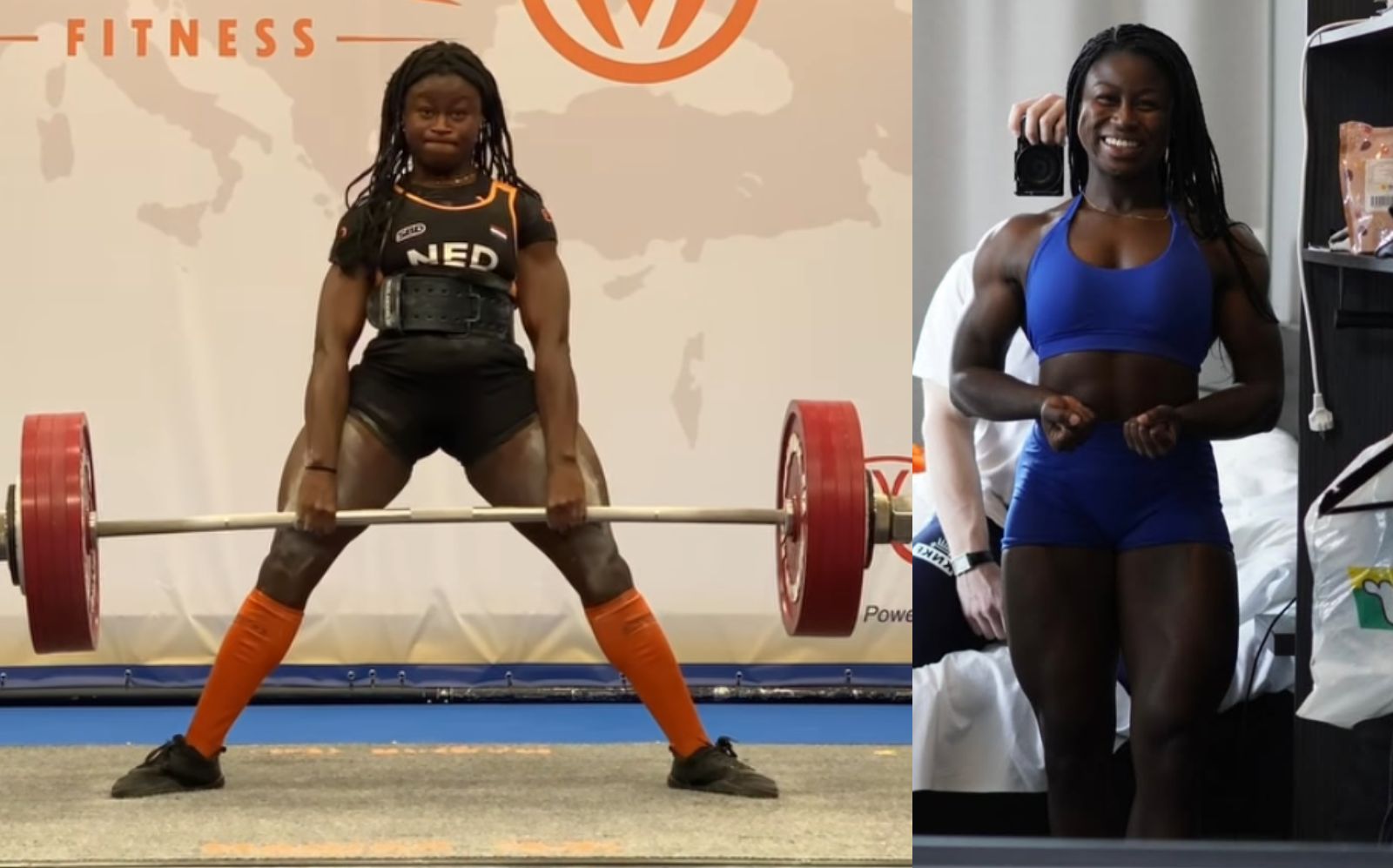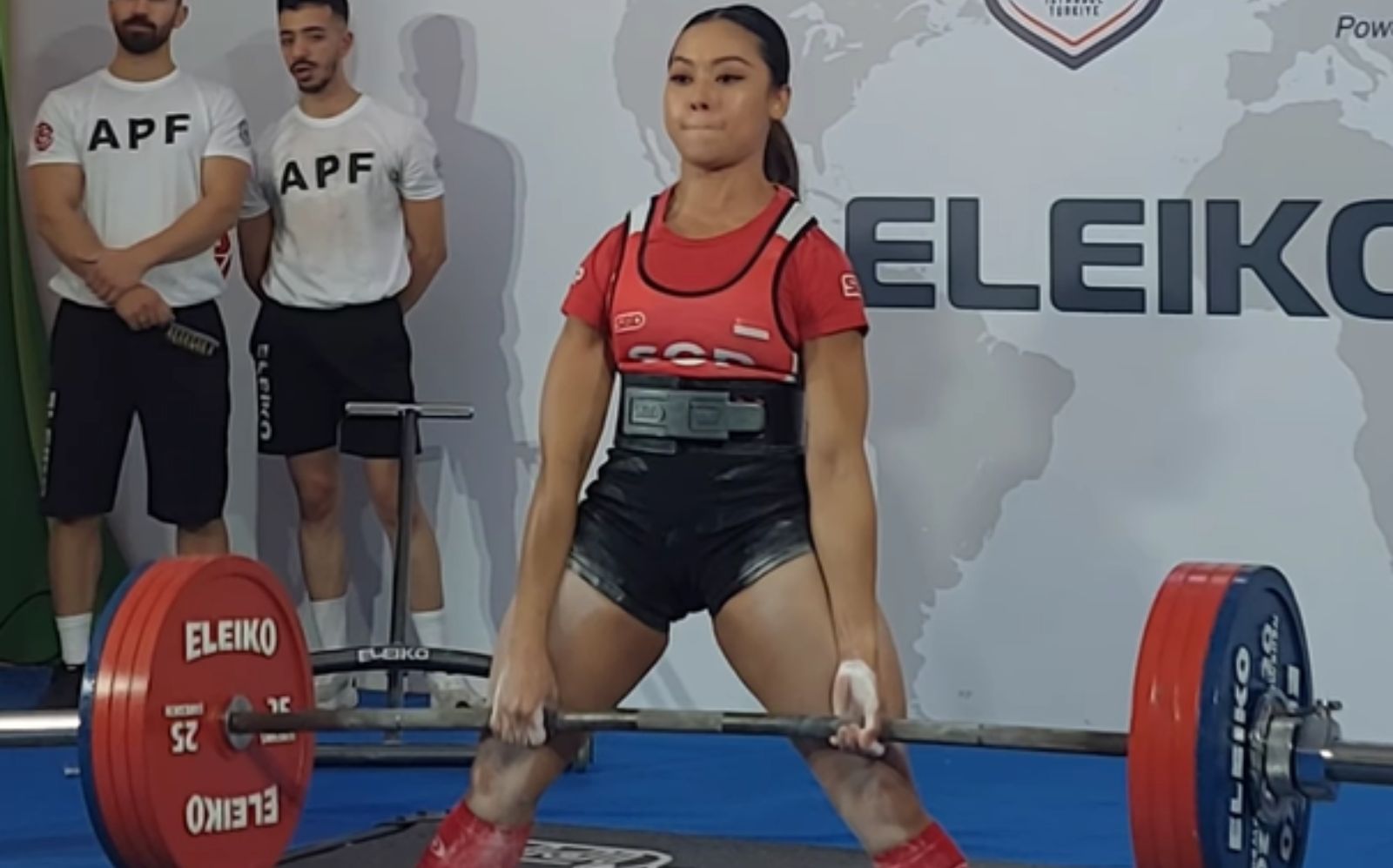The deadlift is one of the best exercises you can do for building muscle and strength. In fact, it’s hard to think of an exercise that offers more benefits. As well as being a bodybuilding, powerlifting, and strongman staple, deadlifts are also a very functional exercise. That is to say, they have a carryover to many sporting and everyday activities.
There are several different versions of the deadlift you can use in your training, and each one has unique advantages and benefits. In this guide, we’re going to lift the lid on the stiff-leg deadlift.
What muscles do stiff-leg deadlifts involve?
Stiff-leg deadlifts are technically an isolation exercise because they only involve movement at one joint. We say technically because, despite this, they work several large and important muscle groups.
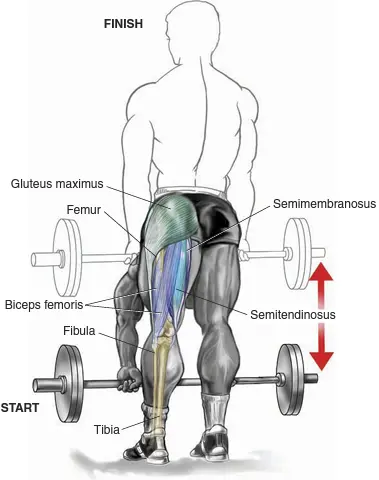
Most isolation exercises target just one main muscle, which fitness experts call the agonist. In contrast, stiff-leg deadlifts involve several muscles that can all be classed as agonists.
Those muscles are:
Hamstrings: Located on the back of your thigh, the hamstrings are responsible for hip extension and knee flexion. There are three hamstrings muscles – semimembranosus, semitendinosus, and biceps femoris.
Level Up Your Fitness: Join our 💪 strong community in Fitness Volt Newsletter. Get daily inspiration, expert-backed workouts, nutrition tips, the latest in strength sports, and the support you need to reach your goals. Subscribe for free!
Gluteus maximus: Known as the glutes for short, and basically your butt, this is the largest muscle in the human body. It’s your primary hip extender.
Erector spinae: This is the collective term for the muscles that make up your lower back (1). The erector spinae is responsible for extending your spine, spinal lateral flexion, and also holding your spine rigid when you lean forward from your hips. In stiff-leg deadlifts, the erector spinae mostly works isometrically or statically.
How to perform stiff-leg deadlifts
To get the most from any exercise, you must perform it correctly. Improper exercise performance can make your workout less effective and could also increase your risk of injury. This is especially true for the stiff-leg deadlift. Done with lousy technique, this exercise could cause serious back injury.
Follow these instructions to make sure you do the stiff-leg deadlift properly.
1- Grab and hold a barbell with an overhand, shoulder-width grip. Stand with your feet about hip-width apart with your arms straight and the bar in front of your thighs. Brace your core and bend your knees very slightly so that they are just short of being fully locked. Lift your chest, pull your shoulders down and back, and look straight ahead. This is your starting position.
2- Without bending your knees, hinge from your hips and lean forward, lowering the bar down toward the floor. Lean as far as you can without rounding your lower back. Your range of motion will depend on your hamstring flexibility.
3- Squeeze your glutes and stand back up. Take care not to lean back at the top. Reset your core and repeat.
Watch bodybuilding legend Dorian Yates explains how to do stiff legged deadlift
The benefits of stiff-leg deadlifts
Why do stiff-leg deadlifts? Here’s why! These are the main benefits of this traditional barbell exercise:
An effective posterior chain exercise: Stiff-leg deadlifts work all of your major lower body posterior chain muscles. A strong posterior chain is essential for athletic performance as well as keeping your back healthy. Studies tell us that strength training is an effective way to prevent and treat back pain (2).
Increased hamstring flexibility: While it’s easy to think of the stiff-leg deadlift as a strength exercise, it also provides your hamstrings with a deep, beneficial stretch. Tight hamstrings can affect both knee and back health and may also impair athletic performance. Weighted stretching is an excellent way to improve flexibility.
Minimal quadriceps involvement: Regular deadlifts involve a lot of quad activation. With stiff-leg deadlifts, your quads are relegated to stabilizers, and more of the work falls on your posterior chain. If you want to emphasize your hamstrings, glutes, and erector spinae, stiff-leg deadlifts are an effective way to do it.
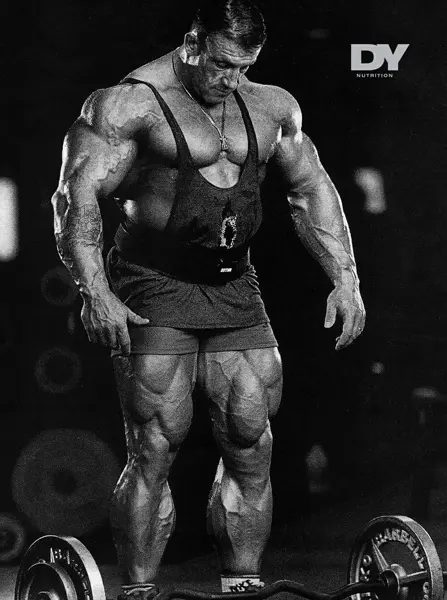
Can be used to add variety to your workouts: If you usually do regular deadlifts for your posterior chain, you can use stiff-leg deadlifts to work most of the same muscles but in a new and unusual way. Variety is just as important as load allocation and rep scheme for building muscle and strength.
An excellent way to learn how to hip hinge: Stiff leg deadlifts involve a very deliberate hip hinge. That means you lean forward without rounding your lower back. Lots of exercises require a hip hinge, including regular deadlifts, bent-over rows, T-bar rows, power cleans and snatches, and kettlebell swings. Mastering the hip hinge will make all of these exercises safer and more effective.
Stiff-leg deadlift tips
Get the most from stiff-leg deadlifts with these useful tips!
Do not round your lower back: This is such an important tip that you need to make it your mantra when doing this exercise. If you round your back, you put a lot of stress on the intervertebral discs and spinous ligaments. If damaged, these structures take a very long time to heal, and may even require surgery. Keep your lower back slightly arched to protect it from injury.
Use a mixed grip: If you find your hands start to fail before your posterior chain, consider using a mixed grip. This is when one hand is pronated, and one hand is supinated to stop the bar rolling out of your fingers. If you do use this grip-saving strategy, make sure you alternate your grip set by set.
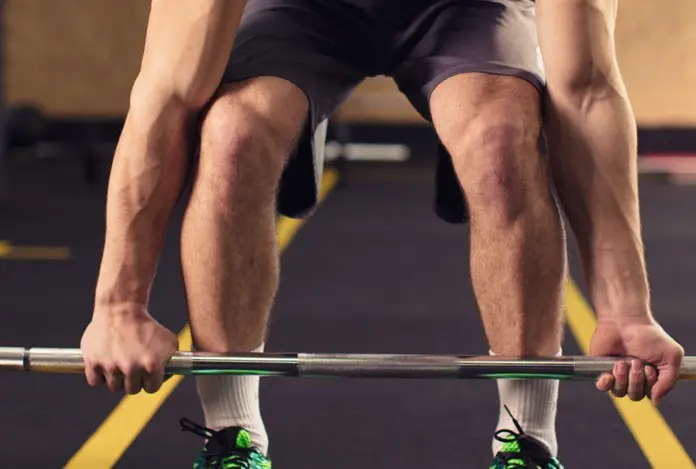
Stick to light to moderate weights: This exercise is not really ideal for lifting heavy loads. If you try, you may find yourself either falling forward onto your toes or rounding your lower back. Instead, use light to moderate weights and moderate to high reps, i.e., 8-20. Think of this as an endurance or hypertrophy exercise, rather than a pure strength developer
Place weight plates under your toes to increase hamstring recruitment: This handy trick is easy to implement and will really fire up your hamstrings and glutes. Use small plates, such as 2½ pounders, under the balls of your feet, to get even more from stiff-leg deadlifts.
Imagine your upper body is in a cast: Ideally, when you do this exercise, the only joint that should move is your hips. Reinforce this movement with some imagery. Picture your upper body in a cast that stops you from bending your back. This includes your neck. Then, as you hinge forward, focus on keeping your upper body completely rigid.
Stiff-leg Deadlift: Variations and Alternatives
Looking for a different way to train the same muscles? We’ve got your back! Here are our six favorite stiff-leg deadlift variations and alternatives.
Level Up Your Fitness: Join our 💪 strong community in Fitness Volt Newsletter. Get daily inspiration, expert-backed workouts, nutrition tips, the latest in strength sports, and the support you need to reach your goals. Subscribe for free!
1- Dumbbell stiff-leg deadlifts
When you use a barbell, the weight is slightly in front of your center of gravity (COG) and base of support. While that is part of what makes this exercise so effective, it also places extra stress on your lower back. If you use dumbbells, you can keep the load closer to your COG, which will reduce back strain. This is a good option for exercisers with pre-existing back conditions.
How to do it:
- Stand with your feet hip-width apart and a dumbbell in each hand. Hold the weights next to your legs with your palms turned inward. Bend your knees slightly, so they are just short of fully locked. Lift your chest, brace your core, and pull your shoulders down and back.
- Without bending your legs or rounding your lower back, hinge forward from your hips and lower the weights down the outside of your knees. Descend as far as your flexibility allows.
- Stand back up and repeat. Do not lean back at the top of your reps.
2- Romanian deadlifts
A lot of people think that stiff-leg and Romanian deadlifts are the same. This is not the case. With stiff-leg deadlifts, you lean forward without moving your hips to the rear. In contrast, Romanian deadlifts involve a much more pronounced and purposeful hip movement. Because of this, Romanian deadlifts allow you to lift more weight and are better for building strength.
How to do it:
- Hold a barbell with an overhand or mixed grip. Stand with your feet hip to shoulder-width apart, knees slightly bent. Your arms should be straight, and the bar should be in front of your thighs. Brace your abs, lift your chest, and look straight ahead.
- Push your hips back and hinge forward from your hips. Lower the weight down the front of your legs. Descend as far as your flexibility allows. Do not round your lower back.
- Drive your hips forward and stand up straight. Reset your core and repeat.
3- Hip thrusts
The main disadvantage of stiff-leg deadlifts is that they can be hard on your lower back. This is especially true if you have inadequate hamstring flexibility. Tight hamstrings increase the chances that you will round your lower back, and you know how dangerous that can be! Hip thrusts work most of the same muscles as stiff-leg deadlifts, but with much less strain on your lower back.
How to do it:
- Lie on your back with your legs bent and feet on the floor. Rest a weight across your hips if you need more resistance than just your bodyweight.
- Drive your feet into the floor and lift your hips up toward the ceiling. At the top of the rep, your knees, hips, and shoulders should form a straight line.
- Lower your butt back to the floor and repeat.
- Increase your range of motion by placing your feet or your shoulders on an exercise bench. You can also do this exercise using one leg at a time.
4- Kettlebell swings
The kettlebell swing is a fast-paced hip hinge exercise. Unlike stiff-leg deadlifts, kettlebell swings involve plenty of momentum. Lifting weights quickly will develop muscle power, which is your ability to generate force quickly. Kettlebell swings are also a very useful conditioning exercise. A set of high-rep swings will drive your heart and breathing rate sky high!
How to do it:
- Hold your kettlebell in front of your hips and stand with your feet shoulder to hip-width apart. Bend your knees slightly. Push your hips back and lower the weight down to around knee-height.
- Drive your hips forward and, keeping your arms straight, swing your ‘bell forward and up to about shoulder height. Imagine you are jumping forward. That’s the hip action you need for this exercise.
- Swing the weight back down and repeat.
- You can also do this exercise one-handed or using a dumbbell if you do not have a kettlebell.
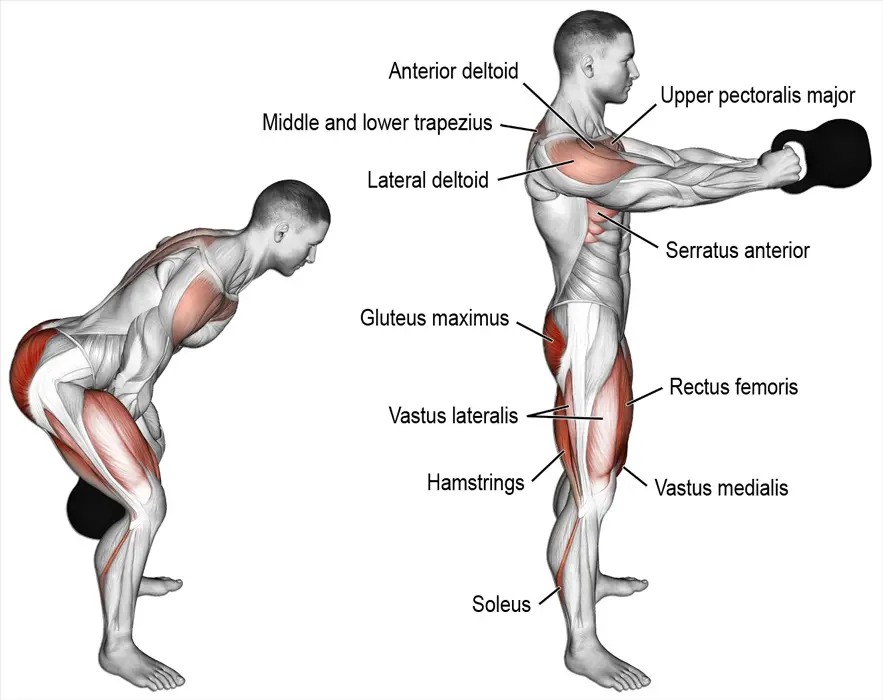
5- Good mornings
Stiff-leg deadlifts involve holding a barbell or dumbbells in your hands. With good mornings, the weight rests across your shoulders. This creates a longer lever and increases the demand placed on your back muscles. Providing you can do this exercise without rounding your lower back, good mornings are very effective if challenging posterior chain exercise.
How to do it:
- Rest and hold a barbell across your upper back, as though you were going to do a set of squats. Hold the bar tightly and pull it down onto your traps to stop it moving. Stand with your feet shoulder to hip-width apart, knees slightly bent. Lift your chest, brace your core, and look straight ahead.
- Push your hips back and hinge forward from your hips. Do not round your lower back. Lean as far forward as your flexibility allows.
- Drive your hips forward and stand up.
- Reset your core and repeat.
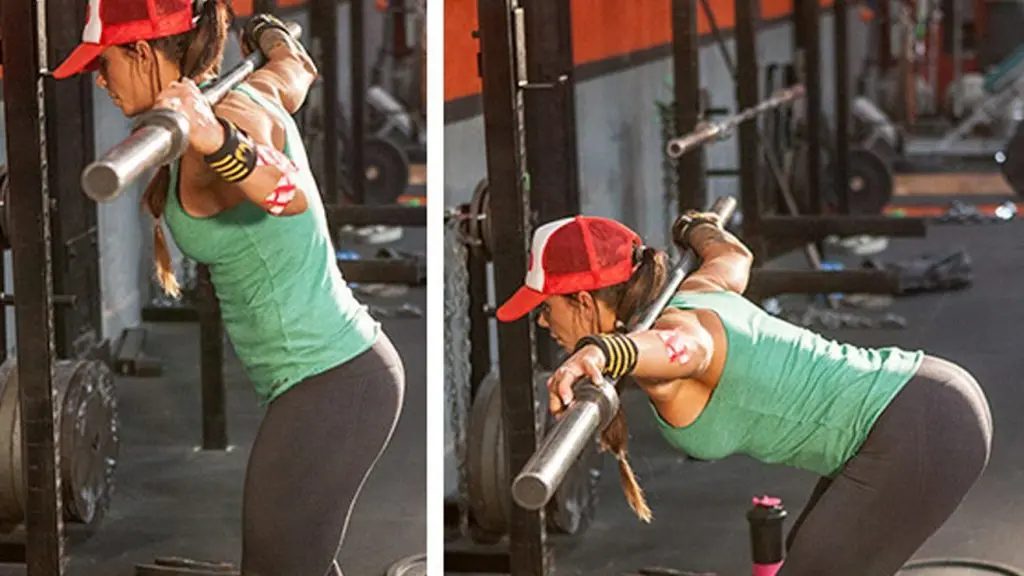
6- Single-leg stiff-leg deadlifts
Most people have a slight left-to-right strength imbalance. But, if this imbalance becomes too pronounced, it can have an adverse effect on how you look and your athletic performance too. Imbalances can also increase your risk of injury. Use single-leg stiff-leg deadlifts to identify and fix your left-to-right posterior chain strength imbalances and improve your balance and coordination too.
How to do it:
- Stand with your feet together and your hands by your sides. Shift your weight over onto one leg. Bend your supporting knee slightly, and then keep it rigid.
- Hinge forward from your hips and reach down toward the floor. Extend your non-weight bearing leg out behind you to act as a counterbalance. Lean as far forward as your flexibility allows. Do not round your lower back.
- Stand back up and repeat. Complete all your reps on one side before resting and swapping legs.
- Make this exercise harder by holding one or two dumbbells or a barbell.
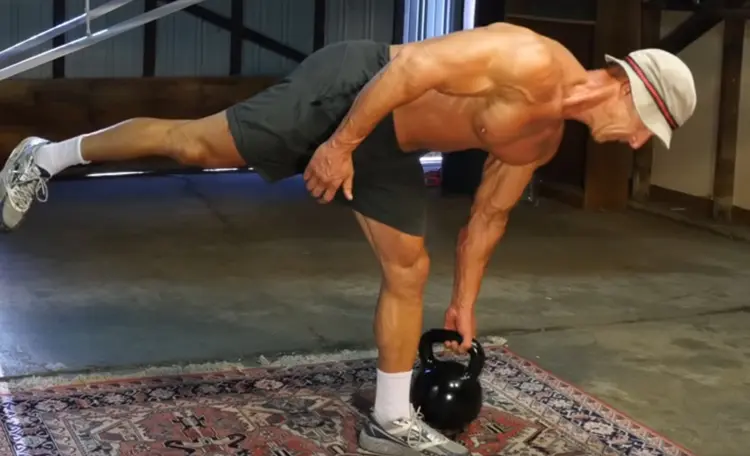
Common Stiff-Leg Deadlift Mistakes to Avoid
Get the most from stiff-leg deadlifts by avoiding these common mistakes.
Standing on a block, step, or bench: Old-school bodybuilders were often photographed doing stiff-leg deadlifts while standing on a bench or box. This allowed them to bend much further forward than usual. Unfortunately, that extra range of motion invariably came from rounding the lower back, and not by stretching the hamstrings.
Unless you have the hamstring flexibility of an elite gymnast, doing stiff-leg deadlifts on a raised platform is nothing more than a recipe for injury.
Looking forward: When doing stiff-leg deadlifts, you should endeavor to keep your neck neutral. Don’t lift your head to look at yourself in the mirror. Lifting your head puts a lot of stress on your cervical vertebrae – that’s your neck. Instead, imagine your neck is in a surgical collar and make sure your head follows the rest of your spine as you move. You should be looking down at the floor at the mid-point of each rep.
Leaning back at the top of each rep: Leaning back, especially with a weight in your hands, increases your risk of severe intervertebral disc injury. To make matters worse, it doesn’t add anything to the exercise. In short, there is no need to lean back at the top of each rep. It will do you far more harm than good.
Moving too fast: High-speed reps increase your risk of injury. Unless you are very proficient, you won’t be able to maintain your neutral spine. There is also a risk of overstretching your hamstrings, which could result in a muscle tear. Instead, for both safety and better results, do this exercise with a slow, controlled tempo, such as two seconds up and two seconds down. Add a mid-rep pause of two more seconds to make it even more effective.
Bending the knees: While your knees should not be completely locked during this exercise, they should be just shy of fully extended and remain rigid throughout. We call this “soft knees.” Once in this position, your knees should not move. Keep your legs stiff – that’s why this exercise is called stiff-leg deadlifts.
Using too much weight: Using more weight than you can safely handle will probably lead to rounding your back and injury. use a light to moderate weight and a full but safe range of motion to get the most from this exercise.
FAQs
Do you have any questions? We’ve got answers! If you can’t find the information you are looking for below, drop us a line in the comments section, and we’ll get back to you as soon as we can.
This exercise looks really dangerous! Is it safe?
There is an element of risk with all exercise, but stiff-leg deadlifts are potentially more dangerous than many other exercises. However, those risks are much lower if you avoid rounding your lower back, use light to moderate weights, and do your reps slowly and smoothly. Because of the risk of injury, if you have a history of back pain or injury, have very tight hamstrings, or have yet to master a proper hip hinge, you should consider doing a different exercise.
Can I wear lifting straps with this exercise?
Because you should only be using light to moderate weights with this exercise, straps shouldn’t be necessary. That said, if you feel like your hands are tiring before your glutes, hamstrings, or lower back, you can use straps if you need to. You could also adopt a mixed grip. If your hands are weak, you may also benefit from some extra grip and forearm training.
My lower back always rounds when I do this exercise. Is that a problem?
Yes! Do your utmost not to round your lower back during this or any other similar exercise. Rounding your lower back not only increases your risk of injury, but it also makes the exercise harder and less effective than it should be. Ask a training partner to tell you if your back is rounding. Also, work on your hamstring flexibility and core strength to fix this problem before it causes serious pain. Finally, you should also consider using less weight as that could be another reason you are rounding your back. Only increase the weight once you are able to do the exercise correctly, i.e., with a neutral (slightly arched) lumbar spine.
The wrap-up
The stiff-leg deadlift is a very useful glute, hamstring, and lower back exercise. It’s especially good for increasing muscle size and boosting flexibility. However, it can be a tricky exercise to master and is not without risks. Whether you are thinking about adding this exercise to your workouts or just want to make sure you are doing it properly, this stiff-leg deadlift guide has got all the information you need.
References:
1- PubMed: Anatomy, Back, Muscles https://www.ncbi.nlm.nih.gov
2- PubMed: The effects of strength exercise and walking on lumbar function, pain level, and body composition in chronic back pain patients https://www.ncbi.nlm.nih.gov


